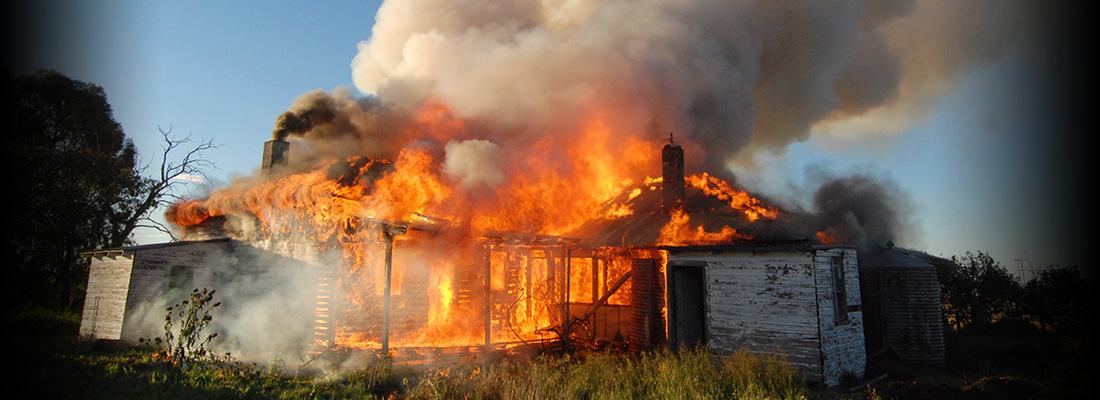

| PREVIOUS | HOME |
Fire negligence finding overturned
by Resolve Editor Kate Tilley
A rural property owner whose homestead was badly damaged after a fire escaped from a neighbouring property has had a negligence finding against the neighbours, and the Rural Fire Service (RFS) that lit the fire, overturned on appeal.
In a commentary on the case, barrister Michael Eburn said: “Sometimes bad things, even foreseeable things, happen but it does not mean anyone is to blame. It was reasonable to set a weed and hazard control fire, the actions taken by the owners and the RFS to mitigate the risk were reasonable, and their post fire inspections were reasonable.”
Brian Herbert Woodhouse and Barry Thomas Fitzgerald together with Virginia Eileen McCoy own neighbouring properties near Berridale in southern NSW. On 20 and 28 August 2012, the RFS conducted controlled burning on the Fitzgerald and McCoy property, at their request, to destroy weeds.
On 5 September 2012, a hollow tree on the property reignited and a burning branch was snapped and carried by strong winds onto Mr Woodhouse’s property, where the fire spread, causing significant damage.
Mr Woodhouse took action against Mr Fitzgerald and Ms McCoy seeking damages for the harm caused by the fire. He claimed they had a non-delegable duty of care to prevent the foreseeable risk of harm arising from the spread of fire, and had breached their duty.
He also claimed the fire was an act of nuisance that could have been avoided by taking reasonable care.
The other property owners alleged contributory negligence by Mr Woodhouse.
On 27 April 2020, the NSW Supreme Court found the damage to Mr Woodhouse’s property would not have occurred but for the RFS’s negligence. It also found contributory negligence by Mr Woodhouse, and assessed the loss at $1.3 million, apportioned between Mr Fitzgerald and Ms McCoy (35%), RFS (55%) and Mr Woodhouse (10%).
On appeal, Mr Woodhouse challenged the contributory negligence finding and the reduced damages because of it. He also challenged the failure to award pre-trial interest.
Mr Fitzgerald and Ms McCoy filed a cross-appeal, challenging the finding their duty of care to Mr Woodhouse was non-delegable, that they and RFS had breached their respective duties of care, and the trial judge’s assessment of loss suffered by Mr Woodhouse.
The issues on appeal were whether:
(1) the escape of fire from a controlled burn constitutes a nuisance
(2) Mr Fitzgerald and Ms McCoy were negligent in allowing the fire to escape
(3) RFS was negligent in allowing the fire to escape
(4) Mr Fitzgerald and Ms McCoy were vicariously liable for RFS’s conduct
(5) Mr Woodhouse was contributorily negligent
(6) liability was to be apportioned between Mr Fitzgerald and Ms McCoy and RFS
(7) damages for rebuilding Mr Woodhouse’s house were correctly assessed.
Justice Basten, with whom Justices Meagher and Payne agreed, dismissed the appeal and upheld the cross-appeal.
In summary, his findings on each of the seven grounds were:
Issue 1: Although Mr Woodhouse had pleaded his case in negligence as arising from the failure to prevent the escape of the fire onto his land, he also sought to claim in nuisance. Private nuisance is not established merely by harm. Use of the land must be “out of the ordinary, unreasonable or otherwise inappropriate”. Controlled burns are a public benefit to destroy weeds and reduce fire hazards. They are a reasonable use of rural land and not themselves a nuisance. The scope of nuisance did not arise, given the pleading of want of reasonable care.
Issue 2: It was not proved that Mr Fitzgerald and Ms McCoy knew, or ought to have known, the roots of the hollow snow gum were alight two weeks after the controlled burn. The steps they should have taken were to monitor the RFS’s activities. Unless the RFS failed to take reasonable precautions, there was no evidence the Fitzgerald/McCoy breach of that duty was causally related to the damage suffered.
Issue 3: The risk of fire in a hollow tree and its roots was well-known. The RFS officer in charge of the burn checked the tree. No witness criticised his actions as falling short of the reasonable precautions required. The fact that bulldozing the tree would have led to the discovery and extinguishment of the fire in its roots did not mean that step should have been taken in the absence of evidence of a concealed fire revealed by monitoring. The negligence claim against RFS should have been rejected.
Issue 4: Because Mr Fitzgerald and Ms McCoy owed a non-delegable duty of care to Mr Woodhouse, they would have been liable for the full amount of the damages, if there had been negligence by the RFS; no apportionment would have been appropriate.
Issue 5: The evidence did not establish any lack of reasonable care by Mr Woodhouse, so no finding of contributory negligence should have been made.
Issue 6: An “apportionable claim” for damage to property is one “arising from a failure to take reasonable care”. A “concurrent wrongdoer” is someone who is, or was, liable for the loss suffered by Mr Woodhouse. The RFS, being protected from liability by statute, even had its members been negligent, would not be, and would never have been, liable for that damage.
Issue 7: Despite deficiencies in the evidence, the experts’ findings were not guesswork and the trial judge was entitled to rely on their agreed opinions. The figure they determined had been indexed to March 2020. It would have been double-counting to allow for inflation by adding an additional amount for interest.
Woodhouse v Fitzgerald [2021] NSWCA 54, 9/4/21
Resolve is the official publication of the Australian Insurance Law Association and
the New Zealand Insurance Law Association.

